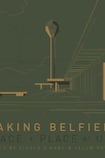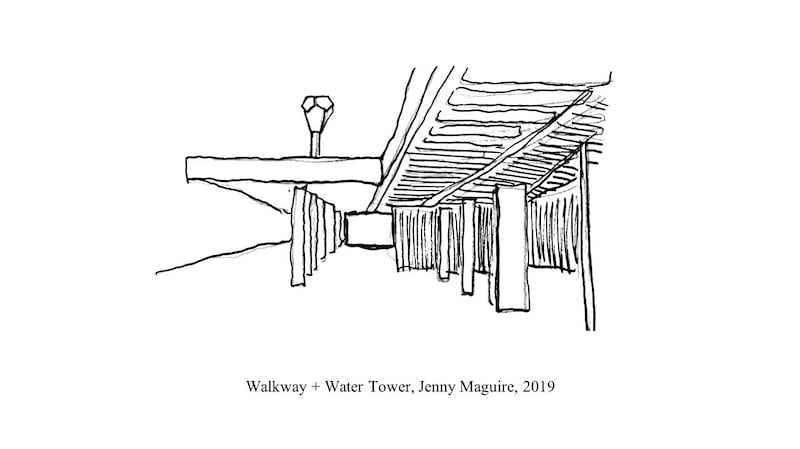
Nobody in Ireland had ever heard of Andrzej Wejchert until he won an international architecture competition in 1964 to masterplan UCD’s utopian suburban campus at Belfield. But then, the Polish architect was just 26 and had sketched his scheme on the kitchen table of his mother’s flat in Warsaw, as he told this writer in 2008, 11 months before his death. It was only after winning the contest that he came to Dublin, eventually setting up practice here with his wife Danuta as A+D Wejchert and Partners.
Curiously, Making Belfield: Space + Place at UCD does not include that charming story about its origins. Neither does it note that UCD’s 2018 Future Campus masterplan competition was confined to six established practices – each with at least two university campus designs among their projects – thereby excluding young architects with bright ideas. By contrast, the original competition was open to everyone, and resulted in 105 entries being submitted by architects from more than 20 countries.
The lavishly illustrated book “celebrates the modern architecture and landscape design” of the Belfield campus, as editors Finola O’Kane and Ellen Rowley declare. Packed with a wealth of information, it recounts the evolution and spatial disposition of this “brave new world” in the suburbs, setting it in the context of university design during the mid-20th century, with detailed descriptions of unashamedly modern buildings by some of the finest architects available as well as the college’s archives and collections.
Relentless purchasing programme
From the initial acquisition of Belfield House and its 44 acres in 1933 to provide playing fields for students in Earlsfort Terrace and Merrion Street, a relentless purchasing programme over the years saw UCD take control of 11 demesnes between Stillorgan Road and Clonskeagh Road, and then transform this “jigsaw of suburban villa landscapes” into a university campus that now comprises 46 buildings populated by 30,000 students and staff, set in “gently undulating parkland” pockmarked by surface car parks.
Belfield was the brainchild of former UCD professor of Greek Michael Tierney, who became president of the university in 1947, which is why the Administration Building designed by Wejchert is named after him. Tierney firmly believed the college needed to be released from its confines in the city centre, where it was “easily the worst housed institution of its size and kind in the world”, and decided – under the influence of Archbishop John Charles McQuaid – that relocation to the southern suburbs was the only viable option.

The site’s relative inaccessibility, as Joseph Brady notes, “does not appear to have entered into anyone’s deliberations”; the further from Trinity College, the better. It was also “generally understood and taken for granted” that UCD “would continue to be a Roman Catholic university”. This was underlined by McQuaid blessing the sod-turning for the new Science Building – Belfield’s first new block – while the second building to be constructed on the campus was a Catholic church, opened amid protests in 1969.
Rowley refers to the “discourse around urban loss” voiced by those who argued that UCD could have developed most of the facilities it needed in the “tight wedge between St Stephen’s Green and the Grand Canal”. After all, Alexandra College was moving out from Earlsfort Terrace, as were the High School on Harcourt Street, Wesley College on the Green and the Sacred Heart Convent on Leeson Street, while so many other sites in the area were redeveloped in succeeding years. But this was always a pipe-dream.
UCD’s student revolt came far too late to stop the move to Belfield. Those of us who suffered what Rowley correctly characterises as the “trauma” of evacuating Earlsfort Terrace when the Arts faculty relocated there in September 1970 found ourselves in the midst of a building site, with the Robin Walker’s Restaurant building just finished and the first phase of Spence Glover Ferguson’s Library still under construction. But at least we got a pre-fab bar built and persuaded CIÉ to extend the No 10 bus route to Belfield.
And so we got used to living with Andrzej Wejchert’s vision of buildings laid out on either side of a covered walkway that served as a crooked spine of the new campus, even though this central element of his masterplan was dissipated over time by more randomly located facilities closer to the perimeter. It also took much longer than expected to provide student housing in Belfield and even the first phase of the Student Centre that we had campaigned for didn’t materialise until 1998, complete with sofas in its bar.
Under the Future Campus masterplan, as Hugh Campbell notes, UCD is aiming to “present a face to the outside world and to invite it in: to create a gateway” on its Stillorgan Road frontage with a “another new centre of gravity” at the main entrance to Belfield.
To be called – in today’s academic marketing parlance – the Centre for Creativity, housing the schools of architecture and engineering, this idiosyncratic edifice designed by New York architect Steven Holl was apparently inspired by the Giant’s Causeway.












